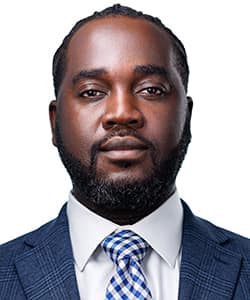Enhancing Patient-Physician Interactions: Addressing Barriers and Strengthening Relationships in the Perioperative Setting
Cite as: Brown A, Fadumiye C. Enhancing patient-physician interactions: addressing barriers and strengthening relationships in the perioperative setting. ASRA Pain Medicine News 2025;50. https://doi.org/10.52211/asra020125.005.
Diversity
The patient-physician relationship has evolved over centuries from ancient Egypt through the French Revolution to its present form. Historically, this relationship has been shaped by each era's socio-political and scientific climate.1 The once paternalistic, physician-centered model has shifted toward a more patient-centric approach that aligns with modern autonomy and shared decision-making values. In today's world, where trust and interpersonal connection are paramount, building deeper, more meaningful relationships between patients and physicians can profoundly impact patient outcomes, particularly in the perioperative setting.2 A strong patient-physician bond can enhance communication, increase adherence to treatment, and foster patient satisfaction, which is vital in the complex and high-stakes perioperative setting.
The Shift Toward Therapeutic Connection
For trust to flourish in the patient-physician relationship, it requires a genuine investment in understanding and empathizing with the patient. This is where the concept of the “therapeutic connection (TC)” comes into play, a relationship in which the provider is fully present, listening with intention, and the patient feels truly heard, understood, and cared for.3 In the perioperative setting, where patients often experience heightened anxiety and vulnerability, this connection can be particularly impactful. For instance, the preoperative visit offers a critical opportunity to build this connection: A physician might address the patient's concerns about anesthesia or discuss postoperative pain management options that align with the patient's personal beliefs or cultural values.
Specifically, in acute and chronic pain management, a strong therapeutic connection enables patients to express concerns about opioid use or alternative pain relief strategies. For example, a patient with chronic pain might express apprehension about relying on medications. The provider reassures the patient of a tailored, comprehensive approach by actively listening and discussing options, such as regional anesthesia, nerve blocks, or even non-pharmacological interventions like mindfulness or physical therapy. This type of individualized care is especially critical in chronic pain settings where patients often feel dismissed or misunderstood.2
When clinicians try to validate these concerns and provide tailored education, patients are more likely to enter surgery or begin pain management treatments feeling reassured and involved in their care. This level of connection requires that institutions provide the necessary tools and training as such bonds yield reciprocal benefits for both the patient and the provider. When clinicians are deeply connected to their patients, they often find their work more meaningful, increasing resilience and reducing burnout. Patients, in turn, feel more confident in their care, knowing that their physician is skilled and truly invested in their well-being.3 This virtuous cycle of enhanced connection leading to better patient care and professional fulfillment can transform the perioperative experience from a time of stress to a time of support and empowerment for both parties.
Barriers to Effective Patient-Physician Interactions
Despite the clear benefits of strong patient-physician relationships, several barriers stand in the way. One major hurdle is cultural competency. In our diverse world, patients come from a wide range of backgrounds that bring unique beliefs, values, and expectations around healthcare. When providers lack cultural awareness or fail to account for these differences, the result can be miscommunication, frustration, and, ultimately, a breakdown in trust. For example, an anesthesiologist in the perioperative setting who does not understand a patient's preference for minimal medication may unintentionally increase their apprehension about pain control, leading the patient to feel misunderstood and less trusting of the planned surgical intervention or overall anesthetic plan of care.
For trust to flourish in the patient-physician relationship, it requires a genuine investment in understanding and empathizing with the patient. This is where the concept of the “therapeutic connection (TC)” comes into play, a relationship in which the provider is fully present, listening with intention, and the patient feels truly heard, understood, and cared for.
In the perioperative and acute pain setting, a lack of cultural competency might manifest in how pain scales are interpreted. Research indicates that patients from some cultural backgrounds may downplay their pain severity due to stigma or mistrust.4,14 Providers who fail to recognize these patterns risk underestimating the patient's pain and administering insufficient pain relief. Similarly, unconscious, implicit biases and negative attitudes toward a specific social group further compound this issue. For instance, studies show that healthcare providers may unconsciously underrate pain levels in minority patients, potentially leading to inadequate management strategies in both acute postoperative and chronic pain settings.5,14 In a preoperative context, implicit bias might manifest as a provider being less likely to address a Black patient's concerns about pain management, potentially leading to inadequate care and a damaged patient-physician relationship. Such disparities are well-documented and contribute to persistent health inequities.4
Provider burnout also presents a significant barrier. Characterized by emotional exhaustion, depersonalization, and a diminished sense of accomplishment, burnout reduces empathy and engagement, often resulting in superficial interactions that fail to build trust. Burnout may present in the perioperative setting as providers rush through preoperative consultations, inadvertently overlooking a patient's concerns or anxieties. In these high-stress environments, where split-second decisions are common, burnout exacerbates disengagement, leading to missed opportunities to build meaningful, therapeutic connections.
Addressing the Barriers: A Multi-Pronged Approach
Overcoming these barriers requires sustained efforts at both institutional and individual levels. Healthcare institutions must prioritize cultural competency as an ongoing, core component of provider training. Beyond generic workshops, cultural competency initiatives should offer scenario-based training that simulates interactions in the perioperative setting, helping providers learn to recognize and respect patients' cultural beliefs in moments of heightened stress or vulnerability.5,6 For instance, the National Standards for Culturally and Linguistically Appropriate Services in Health and Health Care provide a structured approach to delivering culturally respectful and responsive care. These guidelines allow healthcare institutions to integrate cultural understanding across all service levels.7
Individual providers, meanwhile, can make impactful strides on their own. Practicing cultural humility, for example, involves actively asking patients about their cultural values and then adjusting care plans to be culturally sensitive. Self-reflection tools like the Implicit Association Test and personal journaling or patient feedback can help providers recognize and address unconscious biases.8 Additionally, language sensitivity can be improved by learning basic phrases in common local languages or using interpreter services proactively. Regularly engaging in cultural competency courses or local cultural events can further broaden a provider's perspective on diverse healthcare beliefs. Such personal steps empower clinicians to foster more inclusive interactions, improving patient trust and satisfaction independently of larger systemic changes.
Leadership also plays a pivotal role in promoting a culture of inclusivity. By actively modeling respect and fostering an environment where diversity is valued, healthcare leaders can help dismantle structural barriers to effective patient-physician relationships. Several institutions have implemented inclusiveness in their cultures through diversity and inclusion councils. These councils implement policies, host workshops, and facilitate dialogue that empowers providers to connect authentically with patients from all backgrounds, ultimately leading to better outcomes and patient experiences.9,10 The key to preventing burnout is promoting a sense of mattering where providers feel their work is significant and appreciated. Institutions can support matters by recognizing contributions, providing opportunities for professional growth, and offering work-life balance options. The Stanford WellMD Center, for example, has established a comprehensive physician wellness program designed to prevent burnout by promoting well-being, support, and resilience. Through initiatives like these, providers feel more valued and engaged, enhancing their ability to connect empathetically with patients.11 Cultivating a culture of mutual respect where contributions are recognized and work-life balance is prioritized can profoundly impact job satisfaction and patient care.12
Self-reflection remains a critical component in improving patient-physician interactions. Healthcare providers must continuously examine their own biases, attitudes, and behaviors. Reflective practices, such as peer discussions and journaling, promote ongoing cultural humility—a lifelong commitment to self-awareness and openness to learning. In the perioperative context, this could involve surgeons taking a moment to consider any assumptions they might have about a patient's understanding of the procedure, thus ensuring they provide clear, accessible explanations tailored to each patient's background.
Tackling Provider Burnout: A Systemic Imperative
Finally, addressing provider burnout requires systemic changes within healthcare organizations. While individual coping mechanisms, such as mindfulness and stress management, are important, they are not enough alone. Institutions must create work environments that reduce stress and allow providers the time and energy to truly connect with their patients. For example, flexible scheduling and additional staffing reduce the pressures on individual providers, giving them the bandwidth to engage in compassionate and personalized care. Creating a wellness-oriented culture and offering robust mental health resources can also mitigate burnout.11 Icahn School of Medicine at Mount Sinai in New York, NY, for example, has established its Center for Stress, Resilience, and Personal Growth, which provides resources and support tailored to reducing stress and enhancing resilience for healthcare professionals.13
Conclusion: The Path Forward
Improving patient-physician interactions in the perioperative setting is essential for fostering a more empathetic and equitable healthcare system. By addressing the barriers of cultural competency, implicit bias, and provider burnout through fostering a culture of respect, inclusivity, and self-reflection, healthcare institutions can help build more meaningful connections between patients and providers. These connections improve patient outcomes and enhance provider well-being, ultimately creating a safe healthcare environment for patients and physicians. Implementing these strategies will ensure that the perioperative period becomes a time of support, trust, and shared understanding, ultimately transforming patient care to benefit all parties involved.


References
- Kaba R, Sooriakumaran P. The evolution of the doctor-patient relationship. Int J Surg 2007;5(1):57-65. https://doi.org/1016/j.ijsu.2006.01.005
- Hogikyan ND, Kana LA, Shuman AG, et al. Patient perceptions of trust formation in the surgeon-patient relationship: a thematic analysis. Patient Educ Couns 2021;104(9):2338-43. https://doi.org/1016/j.pec.2021.02.002
- Rathert C, Mittler JN, Vogus TJ, et al. Better outcomes through patient - provider therapeutic connections? An exploratory study of proposed mediating variables. Soc Sci Med 2023;338:116290. https://doi.org/1016/j.socscimed.2023.116290
- Thirsk LM, Panchuk JT, Stahlke S, et al. Cognitive and implicit biases in nurses' judgment and decision-making: A scoping review. Int J Nurs Stud 2022;133:104284. https://doi.org/1016/j.ijnurstu.2022.104284
- Nair L, Adetayo OA. Cultural competence and ethnic diversity in healthcare. Plast Reconstr Surg Glob Open 2019 16;7(5):e2219. https://doi.org/1097/GOX.0000000000002219
- Stubbe DE. Practicing Cultural competence and cultural humility in the care of diverse patients. Focus (Am Psychiatr Publ) 2020;18(1):49-51. https://doi.org/1176/appi.focus.20190041
- CLAS Standards. (n.d.). Think Cultural Health. https://thinkculturalhealth.hhs.gov/clas/standards.
- Masters C, Robinson D, Faulkner S, et al. Addressing biases in patient care with the 5Rs of cultural humility, a clinician coaching tool. J Gen Intern Med 2019;34(4):627-30. https://doi.org/1007/s11606-018-4814-y
- Diversity councils. Johns Hopkins Medicine. https://www.hopkinsmedicine.org/diversity/about-us/diversity-council
- Diversity councils, task forces and committees. Baylor College of Medicine. https://www.bcm.edu/about-us/community-engagement-health-equity/our-team/diversity-councils-task-forces-and-committees
- Well MD. WellMD & WellPhD. https://wellmd.stanford.edu
- Patel RS, Bachu R, Adikey A, et al. Factors related to physician burnout and its consequences: a review. Behav Sci (Basel) 2018;8(11):98. https://doi.org/3390/bs8110098
- Center for Stress, Resilience, and Personal Growth. Icahn School of Medicine. Icahn School of Medicine at Mount Sinai. https://icahn.mssm.edu/research/center-stress-resilience-personal-growth
- Rogger R, Bello C, Romero CS, et al. Cultural framing and the impact on acute pain and pain services. Curr Pain Headache Rep 2023;27(9):429-36. https://doi.org/10.1007/s11916-023-01125-2